Computer Models of Musical Creativity

(fb2, 456 страниц, 2 319 Kb)
Жанр: Wiley
Издательство: Wiley
In this original and provocative study of computational creativity in music, David Cope asks whether computer programs can effectively model creativity — and whether computer programs themselves can create. Defining musical creativity, and distinguishing it from creativity in other arts, Cope presents a series of experimental models that illustrate salient features of musical creativity. He makes the case that musical creativity results from a process that he calls inductive association, and he contends that such a computational process can in fact produce music creatively. Drawing on the work of many other scholars and musicians — including Douglas Hofstadter, Margaret Boden, Selmer Bringsjord, and Kathleen Lennon — Cope departs from the views expressed by most with his contentions that computer programs can create and that those who do not believe this have probably defined creativity so narrowly that even humans could not be said to create. After examining the foundations of creativity and musical creativity, Cope describes a number of possible models for computationally imitating human creativity in music. He discusses such issues as recombinance and pattern matching, allusions, learning, inference, analogy, musical hierarchy, and influence, and finds that these experimental models solve only selected aspects of creativity. He then describes a model that integrates these different aspects — an inductive-association computational process that can create music. Cope's writing style is lively and nontechnical; the reader needs neither knowledge of computer programming nor specialized computer hardware or software to follow the text.